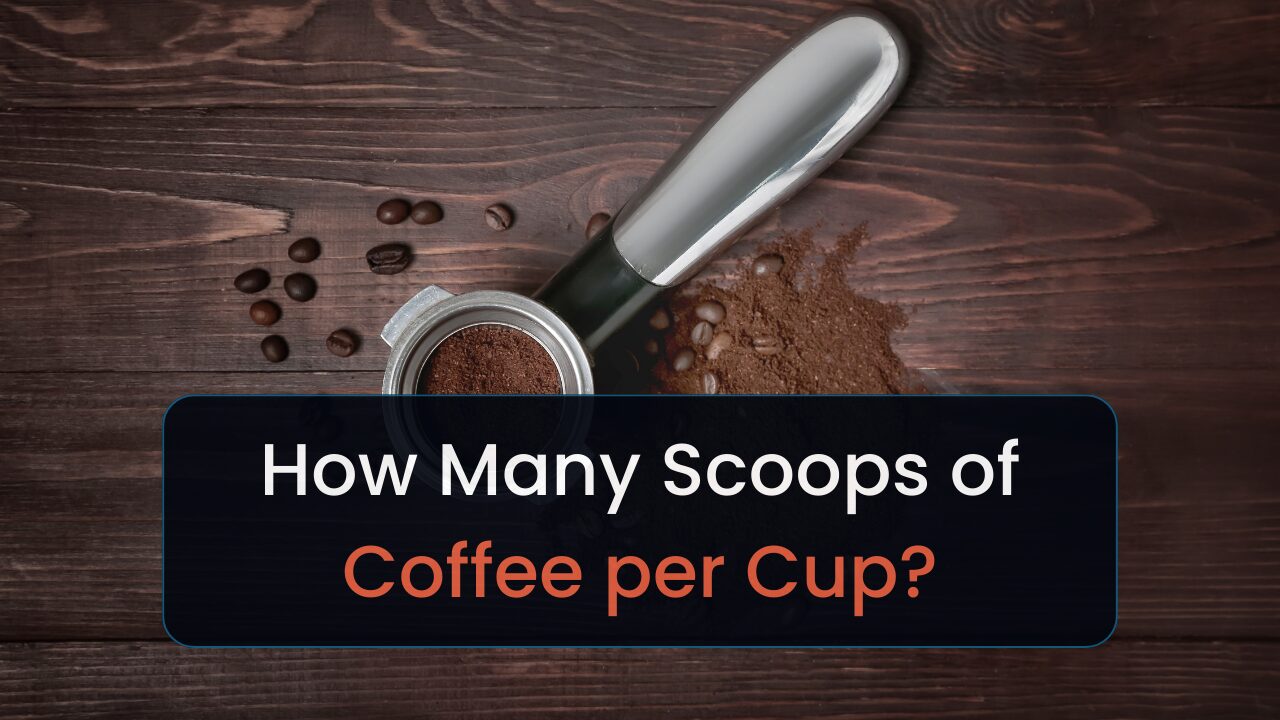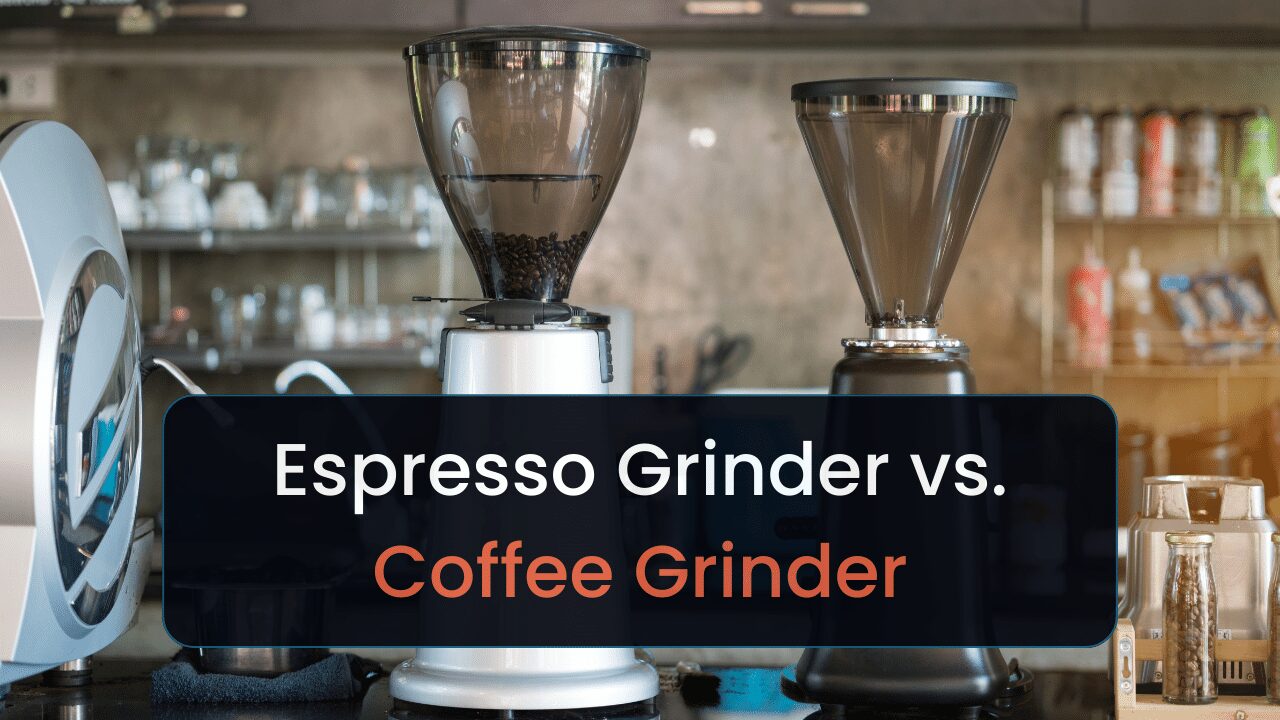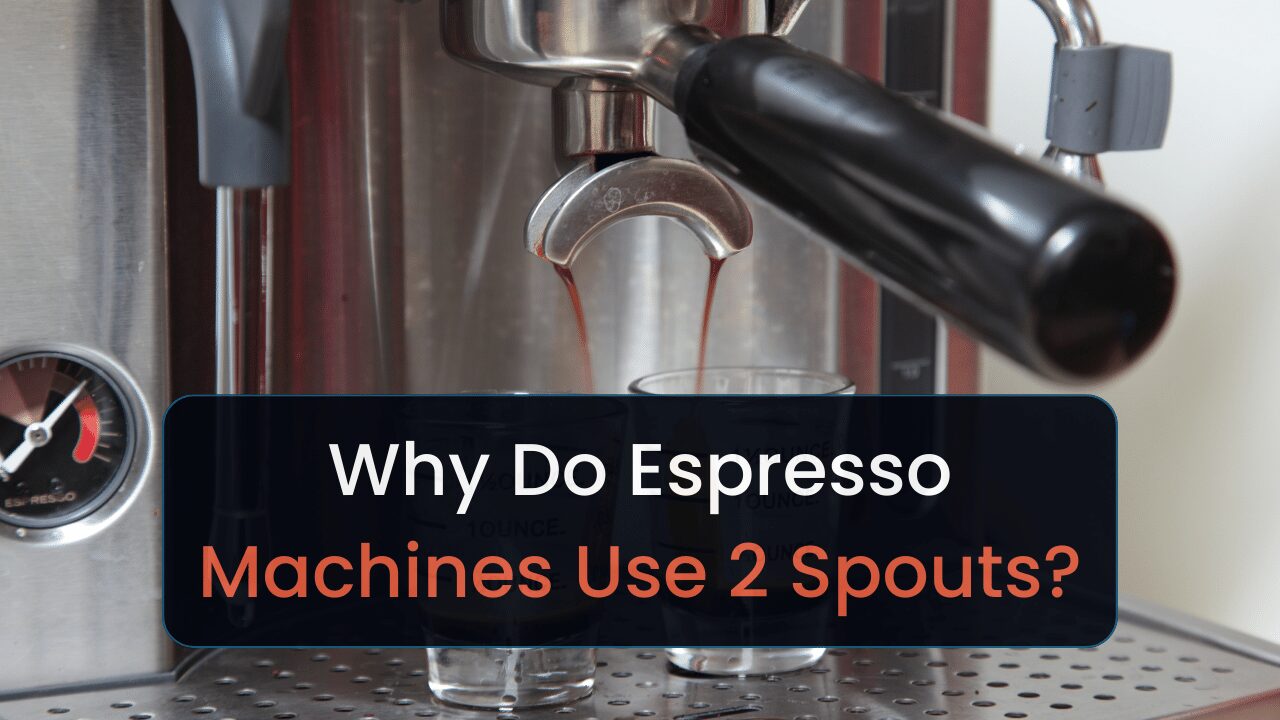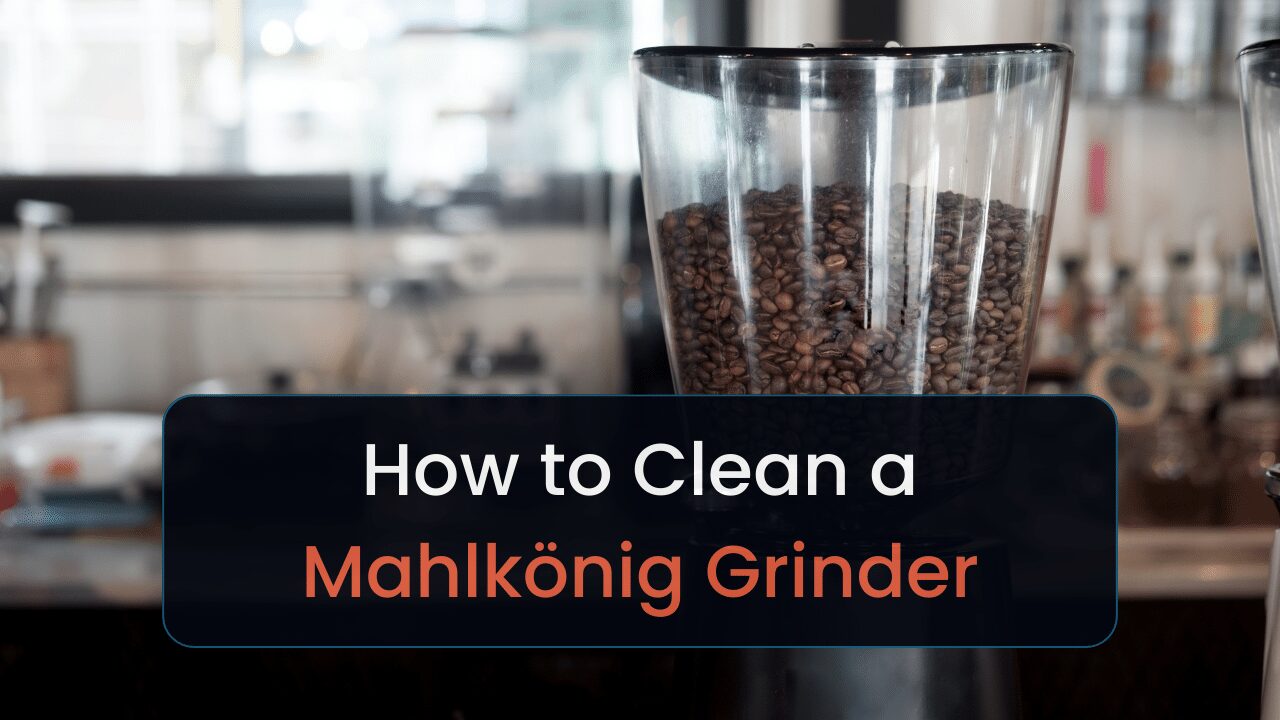This is a review of the best 4-cup coffee makers. Check out our recommendations to learn more.
I often want to find coffee makers that’ll brew 4 cups. I don’t want a carafe with too much coffee or too little. Hence, why I wrote this guide.
I went with the Capresso 303.01 because it’s one of the most affordable and compact ways to produce concentrated coffee. Making it ideal for anyone living in smaller buildings and on a budget.
This only produces espresso. However, I’ll provide many black coffee machines throughout this piece.
Let’s jump into the fray.
5 Best 4-Cup Coffee Makers for Home Use
- Capresso 303.01: Top pick
- Brentwood TS-213BL: Best for beginners
- Gevi 4-Cup Coffee Maker: Includes auto-shutoff
- Cuisinart 4 Cup w/Stainless-Steel Carafe: Includes thermal carafe
- Yama Glass Pour Over Coffee Maker: Best High-end coffee maker, Canada
5 Top 4-cup Home Coffee Makers
The following mini-reviews will cover electric and non-electric coffee makers that’ll brew up to 4 cups of coffee in a carafe.
Don’t limit yourself to these machines if 4 cups of coffee are all you can handle.
Consider coffee makers with 5 or more cups. Fill the reservoir with 32 fl oz of water upon buying these machines. This tank size will brew 4 6-oz cups.
1. Capresso 303.01: Best Overall
![5 Best 4-Cup Coffee Makers In [currentyear] 1 Capresso Espresso Machine](https://timscoffee.com/wp-content/uploads/2023/04/Capresso-Espresso-Machine.png)
| Price * | $$ |
| Dimensions | 9.8 × 7.5 × 13.2 in (D, W, H) |
| Material | Plastic & stainless steel |
| Carafe Material | N/A |
| Warranty | 1 year |
Pros
- Produces multiple cups in one go.
- Compact design saves counter space.
- Easy to use, even for beginners.
Cons
- Takes up to five minutes to brew.
- Durability concerns reported by users.
The Capresso 303.01 is a perfect fit for those who enjoy hosting small gatherings, as it can brew up to four cups of espresso before requiring a refill.
Its compact size also makes it ideal for those with limited counter space.
It’s a semi-automatic espresso maker that only produces espresso (concentrated coffee). Unlike most espresso makers, it won’t automate coffee making except with boiling water and applying pressure.
It doesn’t produce coffee in a carafe, but its water reservoir provides up to 4 cups.
Considering its ability to produce multiple cups of strong coffee and its user-friendly design, the Capresso 303.01 is worth its price.
Use the weird-looking knob on the front to adjust your espresso and milk steam’s strength. The more power, the more control you’ll have over your milk and coffee taste.
You’d use a steam wand for making frothed and steamed milk. However, you can’t do so at the same time due to the 303.01 having a single boiler. This may slow down your coffee-making.
However, if you were to get a machine with a dual boiler, you’d pay at least $300.
Fortunately, the single boiler helps the machine have a smaller size, making it ideal for tiny kitchens. But not the material used for the machine. Plastic doesn’t withstand wear and tear well.
2. Brentwood TS-213BL: Best 4 Cup Coffee Maker for Beginners
![5 Best 4-Cup Coffee Makers In [currentyear] 2 brentwood ts 213bl](https://timscoffee.com/wp-content/uploads/2023/07/brentwood-ts-213bl.png)
| Price * | $ |
| Dimensions | 8 × 6 × 10 in (D, W, H) |
| Material | Plastic |
| Carafe Material | Glass |
| Warranty | 1 year |
Pros
- Makes hot coffee effectively.
- Compact size saves counter space.
- Attractive & versatile color options.
Cons
- Pot design causes spills when pouring.
- Plastic components emit a strong smell.
- Fragile construction, prone to breakage.
The Brentwood TS-213BL is a perfect fit for those who appreciate a retro aesthetic in their kitchen and prefer a compact coffee maker.
Considering its affordable price, the Brentwood TS-213BL is worth the investment for those who value a good cup of hot coffee and a pop of color in their kitchen.
You’re not getting anything special, considering you’re paying for a machine equal to the price of 4 specialty drinks at Starbucks [1]. It has a power button and a warming plate to keep your carafe warm for hours.
Be careful when pouring it. The carafe isn’t well-designed. Thus, you may accidentally spill when pouring.
The plastic is BPA-free, but it has a strong chemical smell that’ll eventually fade. As most cheap electronics have nowadays. Don’t drop the coffee maker, though. The casing won’t withstand impacts well.
3. Gevi 4-Cup Coffee Maker: Best 4 Cup Coffee Maker With Auto-Shut-Off
![5 Best 4-Cup Coffee Makers In [currentyear] 3 gevi 4 cup coffee make](https://timscoffee.com/wp-content/uploads/2023/07/gevi-4-cup-coffee-make.png)
| Price * | $ |
| Dimensions | 8.8 × 5.5 × 10.6 in (D, W, H) |
| Material | Plastic & stainless steel |
| Carafe Material | Glass |
| Warranty | 1 year |
Pros
- Small footprint for easy placement.
- Features a washable filter for convenience.
- Coffee & warmer are hotter, keeping coffee warm longer.
Cons
- Plastic is fragile.
- Washable filter doesn’t work well with finely ground coffee.
- Requires regular cleaning to prevent mold & mildew.
The Gevi 4-Cup is perfect for the minimalist coffee lover who appreciates a hot brew and values a small kitchen footprint. Its compact design and hotter-than-average warmer make it a standout choice for small spaces and individual use.
Considering its unique features like the washable filter, auto-off function, and hotter coffee, the Gevi 4-Cup is worth the price. It offers a balance of functionality and convenience.
Let’s talk about the filter. It’s metal and reusable, which prevents you from having to buy single-use paper ones. But it’s not great for fine coffee grounds. The mesh has bigger gaps for pesky grounds to escape into your drink.
As with all coffee makers, you must clean it regularly to prevent mold accumulation. Then you’ll need to descale it once every couple of months to prevent mineral buildup.
It’s plastic. The Gevi won’t withstand wear and tear well. And if you’re worried about BPA, don’t. It’s BPA-free.
4. Cuisinart 4 Cup W/Stainless-Steel Carafe: Best 4 Cup Coffee Maker With Stainless Steel Carafe
![5 Best 4-Cup Coffee Makers In [currentyear] 4 cuisinart 4 cup wstainless steel carafe](https://timscoffee.com/wp-content/uploads/2023/07/cuisinart-4-cup-wstainless-steel-carafe.png)
| Price * | $ |
| Dimensions | 6.85 × 8.8 × 11.1 in (D, W, H) |
| Material | Plastic |
| Carafe Material | Stainless steel |
| Warranty | 3 years |
Pros
- Carafe is unbreakable.
- Compact design for easy storage.
- Brews coffee quickly.
Cons
- Requires precise alignment for proper brewing.
- Can overflow & mix grounds with coffee.
- Unsightly.
The Cuisinart 4-Cup is perfect for those who appreciate a robust brew and don’t mind a hands-on approach to their morning coffee ritual.
Considering its sturdy carafe and low price point, it’s well worth the price.
The casing is an eyesore that isn’t as durable as other coffee makers. Thanks to its plastic body, it won’t last as long as fully stainless steel ones.
However, it uses stainless steel where it matters—the carafe. Because of the carafe’s material, it’ll keep your drink warmer for longer without a warming plate.
Warming plates aren’t amazing because they’ll often burn your coffee. Thermal carafes prevent this while allowing you to have fresh coffee throughout the day.
Since you won’t need to rely on the former feature, the automatic shutoff feature will save you money on electricity and reduce the risk of burning down your home from leaving it on all day.
It’ll take around 8 minutes to brew coffee. Great for those who are in a hurry to get to work. However, you can’t program this machine to automatically brew at a specific time.
The small size makes this machine fit in small kitchens, cupboards, and cabinets.
5. Yama Glass Pour Over Coffee Maker: Best 4 Cup Coffee Maker, Canada
![5 Best 4-Cup Coffee Makers In [currentyear] 5 yama glass pour over coffee maker](https://timscoffee.com/wp-content/uploads/2023/07/yama-glass-pour-over-coffee-maker.png)
| Price * | $$ |
| Dimensions | 59.36 × 38.07 × 36.7 cm (D, W, H) |
| Material | Glass |
| Carafe Material | Glass |
| Warranty | 2 years |
Pros
- Offers multiple extraction methods.
- Comes with three different filters.
- Produces a concentrated, clear coffee.
Cons
- Smaller and cheaper than other models.
- Original Yama filters are expensive.
The Yama 4-Cup is a perfect match for those living in Canada who appreciate a “clean” beverage without worrying about chemicals leaking into their coffee. It’s also great for Canadians because you won’t need to worry about voltage compatibility.
Because it doesn’t require any electricity.
The Yama is a pour-over coffee maker, meaning you must perform every coffee-making step manually. It’s excellent for making great-tasting coffee without electricity and having more control over how you want to brew.
Considering its versatility and the quality of brew it delivers, the Yama 4-Cup is worth the price.
It’s a simple maker. It includes a mesh stainless steel filter, removing the need for paper filters. However, it won’t filter grounds as well as their single-use counterparts. Thus, you may find finer grounds in your coffee.
I recommend placing a paper filter inside for optimal filtering.
Most pour-over makers don’t include a 4-cup carafe. However, this one includes a stand with a contemporary design and a nozzle to control the flow of coffee flowing into the carafe.
Otherwise, there aren’t many other features.
Buying Guide for the 4-Cup Coffee Makers
Here’s a checklist of factors to consider when shopping for a 4-cup coffee maker:
| Criterion | Importance |
| Coffee Filter Type | Determines the taste of your coffee & the ease of cleaning. |
| Water Tank Capacity & Size | Ensures the coffee maker fits your space. |
| Extra Features | Features can add convenience & safety to your routine. |
| Durable Materials | Durable materials ensure the longevity of the coffee maker. |
| Stainless Steel vs. Glass Carafe | Affects heat retention, durability, & taste of the coffee. |
| Speed to Make Coffee | Faster brewing times can save you time. |
Not specific enough?
I’ll provide more information (and examples) throughout the following sections. Use the information below to help build a criterion of your own. As what I suggest may not fit your lifestyle.
1. Coffee Filter
Consider these filter types when shopping for a 4-cup coffee maker:
- Reusable Filters: These filters can save you up to $27.93 a year (versus paper filters), & contribute to a reduced carbon footprint [2].
- You purchase them once, and they last for years, minimizing waste.
- Paper Filters: Although they require regular replacement, paper filters offer convenience & easy cleanup.
- They trap more oils & fine particles than reusable filters, resulting in a smoother cup of coffee.
- Biodegradable Filters: The eco-friendly choice, these filters break down naturally over time.
- These often cost more than reusable & paper filters..
Filter choice impacts the taste of your coffee, money spent on each cup, and the environmental footprint of your coffee routine.
2. Machine Size
Start by measuring your countertops; this will determine if the machine can fit in small kitchens, tiny homes, and studio apartments.
And don’t forget the vertical space. Top-access water tanks require sufficient clearance for smooth operation, so measure under your wall cabinets. Some machines, for example, need 4″ of vertical clearance.
Common water tank sizes for 4-cup coffee makers range from 20 to 30 ounces, and the machines themselves come in varying dimensions.
3. Extra Features
Features enable you to fine-tune your brew to match your exact preferences, save time, or make your life a bit easier—for instance, programming auto brewing times.
Key features to consider:
- Auto-start: Program your coffee to brew at a specific time.
- Great for brewing coffee while getting ready for work.
- Brew strength control: Adjusts coffee to your preferred strength.
- Provides more control over your drinks’ taste.
- Pause & serve: Lets you grab a cup mid-brew.
- Ideal for those in a rush.
- Auto-shutoff: Turns off the machine when not in use.
- A reassuring safety feature.
- Built-in grinder: Freshly grinds beans for each brew.
- Ensures fresh coffee beans every cup.
High-end coffee makers (over $300) often boast these features, and more. They cater to the coffee connoisseur who craves an unparalleled experience.
4. Durable Materials
Stainless steel offers rust resistance and longevity but may cost more [3]. Glass components, like carafes, show you the brewing process, yet are prone to breakage. Plastic parts keep the price low but can affect the taste and aren’t as eco-friendly.
Durability matters. A durable machine withstands daily use without compromising performance. It’s an investment that pays off. Cheap, poorly constructed coffee makers may need frequent replacements. In the long run, you’re actually saving money with a durable option.
Manufacturers use plastic casing and glass carafes on most 4-cup coffee makers to price them competitively and to allegedly maximize margins.
Each material has its pros and cons. However, prioritizing durability and carefully choosing materials ensures your coffee maker serves you well for years.
5. Stainless Steel vs. Glass Carafe
Thermal coffee carafes, made from stainless steel, excel at heat retention, making them ideal for those who enjoy sipping hot coffee throughout the day.
Advantages for thermal carafes include:
- Excellent heat retention: Your coffee stays hot for hours.
- Durable & robust: They withstand accidental drops or knocks.
- Portable: You can bring them along on trips or outdoor events.
Glass carafes allow coffee drinkers to see the coffee level. They’re a classic choice for coffee lovers who consume their brew promptly.
Advantages for glass carafes include:
- Visual appeal: They add a touch of elegance to your kitchen.
- Easy to clean: They don’t retain coffee stains or odors.
- Transparency: You can gauge the amount of coffee left at a glance.
Thermal carafes weigh and cost more than their glass counterparts. Their opaque nature makes it difficult to judge the remaining coffee level. Glass carafes, while aesthetically pleasing, aren’t robust and don’t retain heat well.
Most 4-cup coffee makers use glass carafes. However, shopping around will eventually lead you to find one made with stainless steel. If you can’t find one with such a material, search for higher-capacity coffee makers.
Many more 5-cup and 12-cup coffee makers use stainless steel carafes.
6. Speed to Make Coffee
4-cup coffee makers typically take between 6 and 12 minutes to brew a full pot.
For those with fast-paced mornings or little patience, fast-brewing coffee makers are a blessing. They quickly deliver your caffeine fix, leading to a smoother transition into your day.
Coffee makers that brew slower often extract more flavor from the coffee grounds. For coffee aficionados who prioritize taste over time, these machines may seem more appealing.
FAQs: 4-Cup Coffee Maker
Keep reading to find frequently asked questions on 4-cup coffee machines.
How Much Coffee for a 4-Cup Coffee Maker?
Use 1–2 tablespoons of ground coffee per cup (or per 6 oz. of water).
How Many Watts Does a 4-Cup Coffee Maker Use?
On average, 400–600 watts. More powerful models can use around 800–1,200 watts.
Our Verdict
Here are our top 3 choices:
- Capresso 303.01: Produces concentrated coffee.
- Brentwood TS-213BL: Affordable & offers color variety.
- Gevi 4-Cup Coffee Maker: Includes a reusable filter & auto shutoff.
I chose the Capresso 303.01 due to its ability to produce decent-quality espresso. It’s one of the most affordable espresso makers I’ve seen.
Footnotes:
* Price will vary by model, manufacturer, and vendor.






